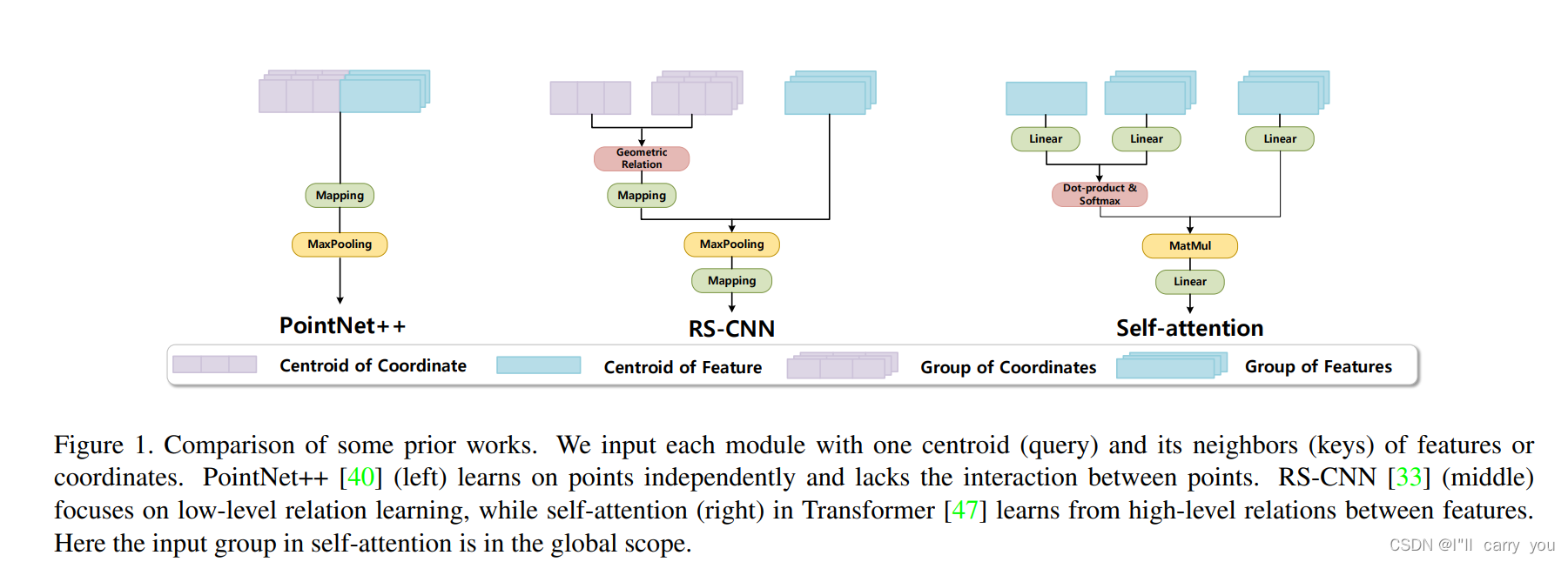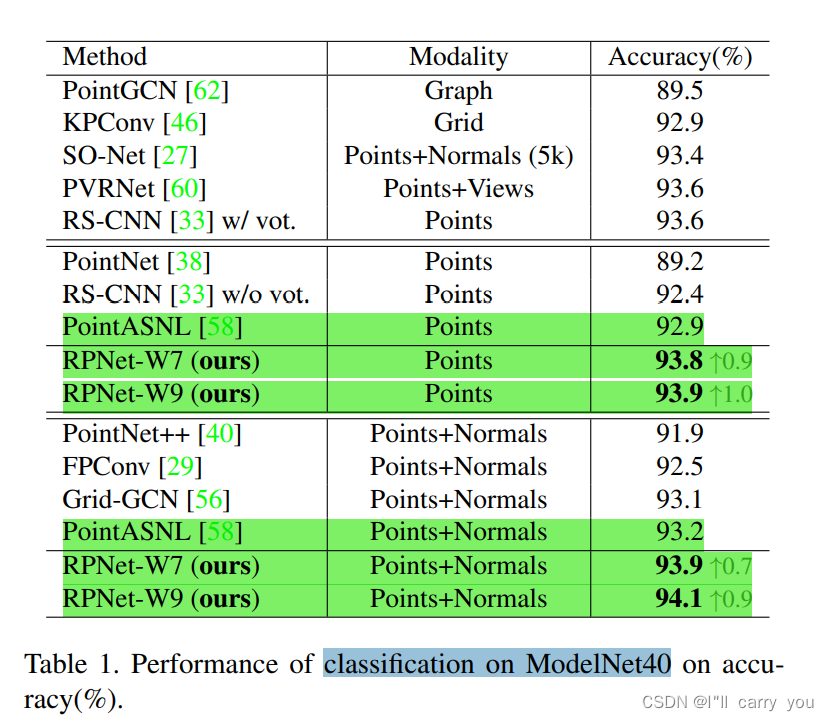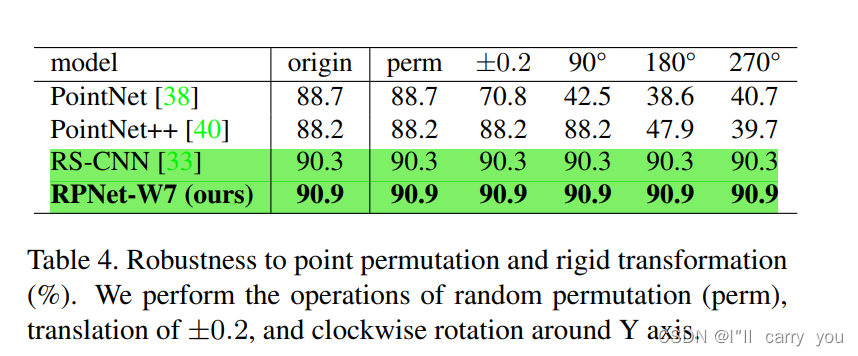1. 四个问题
-
解决什么问题
点云局部操作子的探索 -
用了什么方法解决
提出了GRA模块,基于此构建了RPNet完成点云分析。
To this end, we propose group relation aggregator (GRA) to learn from both low-level and high-level relations. Compared with self-attention and SA, our designed bottleneck version of GRA is obviously efficient in terms of computation and the number of parameters. With bottleneck GRA, we construct the efficient point-based networks RPNet
-
效果如何
RPNet achieves state-of-the-art for classification and segmentation on challenging benchmarks(classification on ModelNet40 - 94.1, semantic segmentation on the datasets of ScanNet v2 and S3DIS (6-fold cross validation-70.8 和68.2)
此外,在 parameters,computation saving, robustness,noises均有不错的表现。 -
还存在什么问题
?
2. 论文介绍
1. Introduction
对PointNet,PointNet++,RS-CNN,self-attention的分析问题,以及引出自己方法。(看别人分析问题,以及如何引出自己的方法,研究动机)
- PointNet:For the ignorance of local structures
- PointNet++:However, this aggregator keeps learning on points independently, losing the sight of shape awareness
- RS-CNN:RS-CNN [33] computes a point feature from the aggregation of features weighted by predefined geometric relations (low-level relation) between the point Si and its neighbors N (Si) (shown in Fig. 1 middle)
( 有从邻域内预定义的 geometric relations(文中称为low-level relation)计算出中心点的特征,但是缺少semantic relations(high-level relations),semantic relations 从哪里来? feature?)(However, RS-CNN is insufficient to learn semantic relations (high-level relations) for the lack of interaction between features)
- self-attention:self-attention能够补充这种 high-level relations,但是受限于 运算量和参数量

- 本文:The goal of this work is to extend grid-based self-attention to irregular points with a high-efficiency strategy。(提出bottleneck的GRA模块(既能学到 geometric shape又能学到semantic information),基于模块构建了宽的和深的网络:width (RPNet-W) and depth (RPNet-D),宽的在分类上好,深的在分割上好,而且high-efficiency)


整个网络:
实验结果:
classification on ModelNet40

semantic segmentation on the datasets of ScanNet v2 and S3DIS (6-fold cross validation).

4.4. Ablation Study
Inner-group relation function H

Aggregation function A.

Cross-channel attention.

4.5. Analysis of Robustness
Robustness to rigid transformation.

noises.

3. 参考资料
4. 收获
本文从分析PointNet,PointNet++,RS-CNN,self-attention出发,到引出自己的方法的分析过程值得学习。
- PointNet,PointNet++:没有从邻域交互
- RS-CNN:预定义的 low-level的 几何特征,没有high-level 的sementic infomation。
- self-attention:有sementic infomation
本文:GLR融合起来都有,learn from both low-level and high-level relations, concat起来,再用MLP去映射。还引入了cross-channel attention。
- Low-level Relation:预定义的几何特征
- high-level relations 从哪里来? features? features就代表语义信息?




